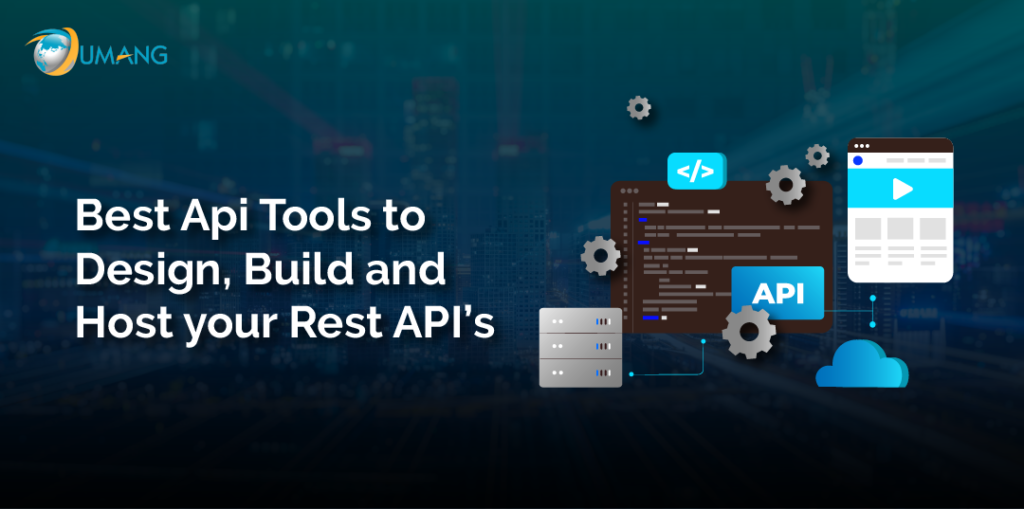Most software programs fail to perform expectedly due to data and communication siloes. This problem is encountered when multiple applications are integrated into a single business process. As a result, the entire process is impacted negatively, followed by poor deliverability and outcome.
To tackle this problem and enhance application efficiency, most developers leverage APIs or Application Programming Interfaces. These not only hasten the interactions between different applications but also eliminate data and communication siloes for the good. Considering the growing use of APIs in SDLC, the following section will further cover their advantages and the best tools to design, build, and host them.

Benefits developers can leverage by integrating APIs
- Automated workflows: Undoubtedly, manual intervention can slow down a process and introduce human errors. To mitigate failure risks and reduce operational efficiency, APIs can be integrated with software programs for automation. These programs handle the operations automatically without human involvement, speeding up the execution and reducing errors.
- Integrability: APIs allow developers to extend the functionalities of different applications through integrations. In other words, software configurations require no significant changes to enable third-party integrations when APIs are involved.
- Better communication: Also, APIs enhance the communication between the related applications, preventing data loss and eliminating silos in the process. Also, with better communication efficiency, process execution happens much faster, enabling applications to produce quick responses.
- Customization: APIs also make it easier for developers to customize applications and their outputs as per the business requirements. These are mainly based on JSON and XML scripts, whose appearance and content can easily be changed from the backend using Angular Java.
Best tools to build, design, and host APIs
1. Linx
Linx is considered one of the best tools to design and call internal and external APIs based on Restful services. It allows the APIs to be integrated with multiple third-party tools and extend their functionalities. Thanks to the presence of a pre-built functionality, developers can reuse the codes to customize the API requests and responses without hard coding. Also, the tool runs seamlessly on the cloud and on-site server without significantly affecting efficiency and performance.
Features
- It can be integrated directly with different databases
- Encrypts data sets at different levels for maximum security
- Automatically pushes and commits updates
- Helps in implementing complex programming logic
- Creates different types of ETL processes
2. Swagger
Being an open-source platform, using Swagger is one of the best choices for developers looking forward to implementing APIs. It allows API hosting on a web-based interface called SwaggerHub for easier development and implementation. Furthermore, its UI is designed specifically to handle extensive API build and design documentation, providing developers with a clearer view of the XML requests and responses.
Features
- Generates API server stubs when multiple programming languages are used
- It comes with different customization options for the XML files
- Helps in extensive documentation
- Has a usable UI for API designing and build
3. Postman
From automating APIs to creating different projects, Postman is the best choice for development and testing. It has an interactive UI to enhance the work done with APIs. Furthermore, it supports API requests and responses in different formats, including XML, JSON, and JavaScript. So, developers have abundant options for designing and developing the APIs from hard coding and integrating Postman with other applications.
Features
- Allows automation of APIs for faster and more efficient responses
- It can be integrated with multiple applications simultaneously
- Multiple options to integrate server environments
- Allows saving API requests in collection formats
- Shows the entire history log of APIs executed
4. Hopscotch
is lightweight and best suited for amateurs, also known as a web-based API designing and developed tool. It comes with a GraphQL testing feature to easily integrate it with the database for fetching different types of datasets and executing the concerned API requests.
Features
- Helps in developing and executing real-time GraphQL testing suites
- Open-source platform for developers
- Allows building APIs from scratch
- It can be integrated with multiple software platforms at once
5. SoapUI
Lastly, we have SoapUI as another best tool to design, build, and test APIs. It allows automating APIs based on REST and SOAP web services, allowing developers to integrate the tool with different project scopes. Additionally, it also comes with advanced in-built reporting tools so that developers easily work on diverse datasets with ease.
Conclusion
APIs allow developers to work on complex behaviors when multiple applications need to be integrated for seamless communication. However, it is not easy to design API requests and responses, let alone develop, automate, and test them. This is why the tools we have mentioned above are from the best suite, as they come with numerous features helpful for developers.